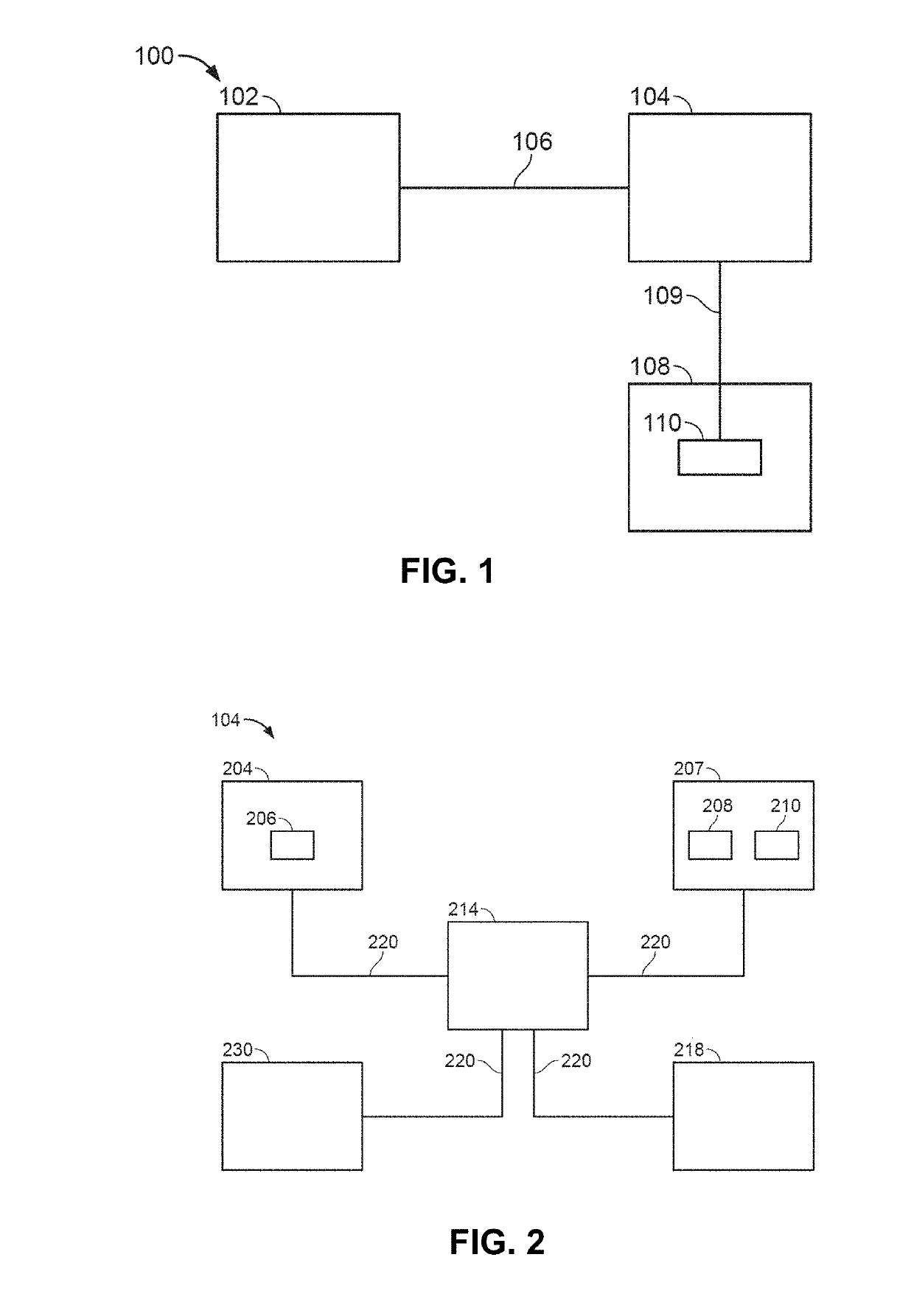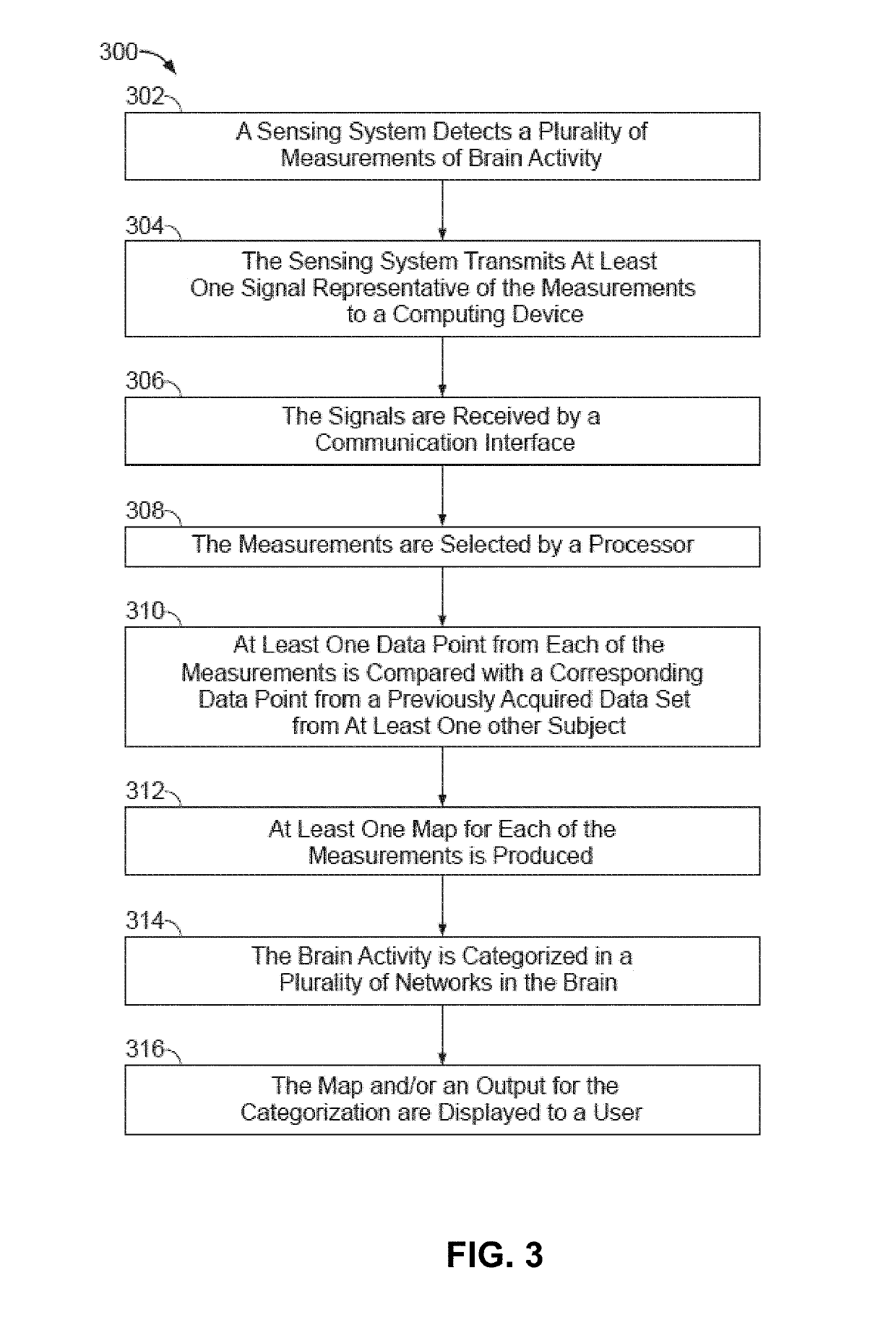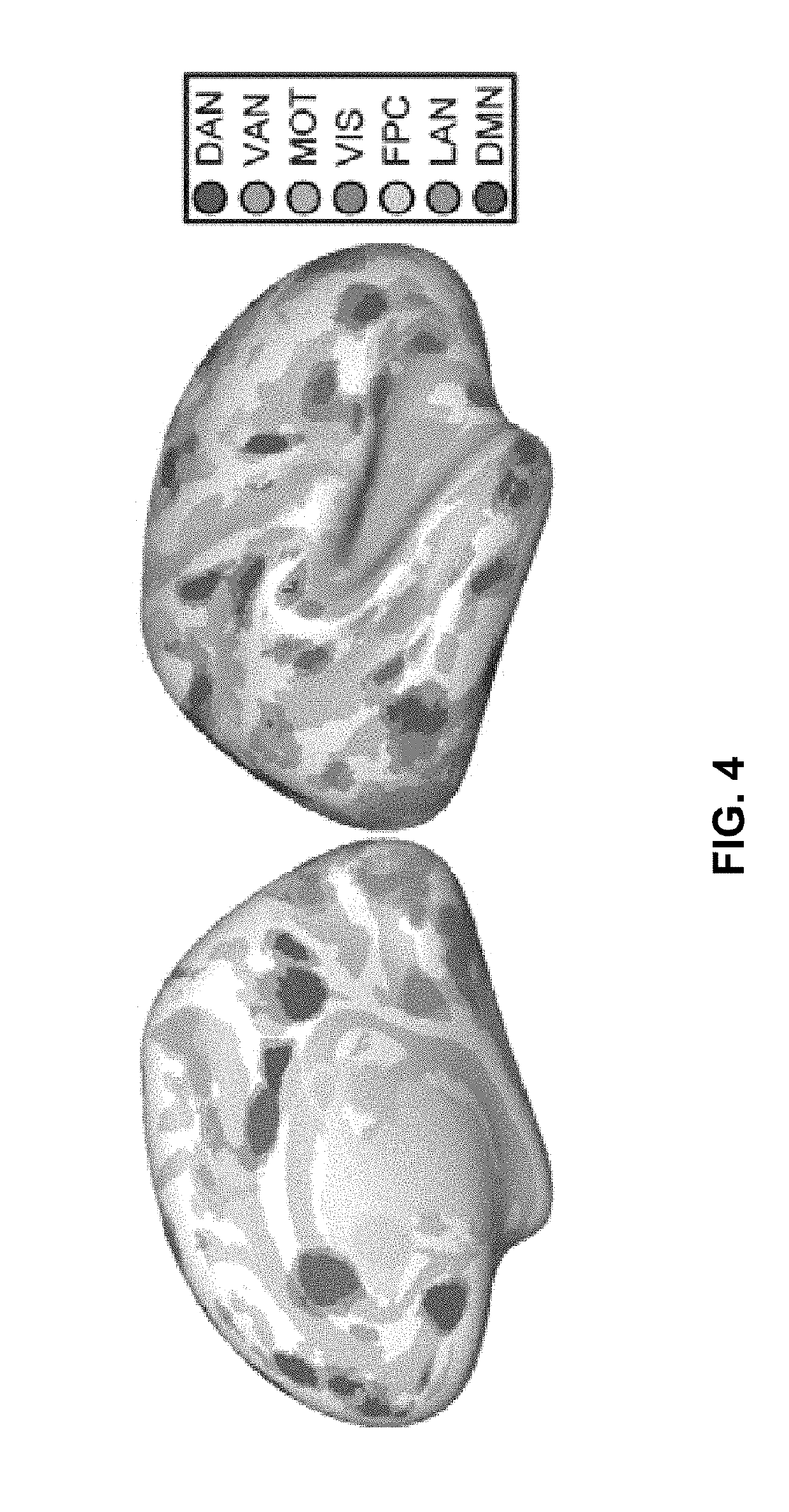Supervised classifier for optimizing target for neuromodulation, implant localization, and ablation
a neuromodulation and target technology, applied in the field of supervised classifiers for optimizing target for neuromodulation, implant localization, and ablation, can solve the problems of less adaptability to obtain functional maps of individual patients, less approachable to potential clinical practitioners that lack the training and expertise needed, and wide use of rs-fmri
- Summary
- Abstract
- Description
- Claims
- Application Information
AI Technical Summary
Benefits of technology
Problems solved by technology
Method used
Image
Examples
example 1
of rTMS Treatment Using rs-fMRI Functional Mapping
[0207]To assess clinical utility and neural network dynamics of resting-state functional MRI (rs-fMRI) for the targeting of bilateral repetitive transcranial magnetic stimulation (rTMS) for a subject with neurological disturbances associated with chronic / repetitive traumatic brain injury (TBI), the following experiments were conducted.
[0208]Individual-level connectome mapping was used to identify left / right dorsolateral prefrontal targets with maximum anticorrelation between dorsal attention network (DAN) and default mode network (DMN). Twenty sessions of left-sided excitatory and right-sided inhibitory rTMS were delivered to a retired NFL defensive lineman as part of a randomized, controlled trial. Montgomery-Asberg Depression Rating Scale (MADRS), cognitive testing, headache measures, and rs-fMRI were conducted before and after treatment. Baseline rs-fMRI findings were compared with 12 age- and gender-matched healthy individuals an...
example 2
n of rTMS Treatment Targeting Using rs-fMRI Functional Mapping with Existing Treatment Targeting Methods
[0227]To identify similarities and differences between the brain regions identified for rTMS treatment using the methods described in Ex. 1 above to existing treatment targeting methods, the following experiments were conducted.
[0228]The spatial coordinates targeted for rTMS treatment determined in Ex. 1 were compared to corresponding target coordinates determined using three previously-described methods: “5 cm rule” targeting, structural MRI-based targeting, and individualized anti-sgACC targeting.
[0229]The target coordinates determined by the 5 cm rule targeting method were published estimates of coordinate values from a previous study of rTMS targeting. As previously described, this method utilizes a target that is 5 cm anterior to a location in the motor cortex at which single-pulse TMS stimulation leads to contraction of the contralateral abductor pollicis brevis muscle. The ...
example 3
n of Cortical Parcellation of TBI and Normal Subjects
[0236]To assess differences in the functional maps of the rTMS-treated subject and normal subjects described in Ex. 1 obtained using the methods described in Ex. 1, the following experiments were conducted.
[0237]Using the voxel-wise estimates for each of the seven individualized resting-state network maps obtained as described in Ex. 1, each voxel was assigned to the network with which it exhibited the maximum likelihood of membership. These values were used to construct a winner-take-all map of cortical parcels.
[0238]FIGS. 22A, 22B, and 22C are images showing winner-take-all maps of individualized resting-state network parcellation obtained for the rTMS-treated subject (FIG. 22A), the group mean of healthy controls (FIG. 22B), and a representative example of a healthy control subject (FIG. 22C). For visualization, maps are projected onto a mean inflated surface from the Human Connectome Project.
[0239]The rTMS-treated subject's ba...
PUM
 Login to View More
Login to View More Abstract
Description
Claims
Application Information
 Login to View More
Login to View More - R&D
- Intellectual Property
- Life Sciences
- Materials
- Tech Scout
- Unparalleled Data Quality
- Higher Quality Content
- 60% Fewer Hallucinations
Browse by: Latest US Patents, China's latest patents, Technical Efficacy Thesaurus, Application Domain, Technology Topic, Popular Technical Reports.
© 2025 PatSnap. All rights reserved.Legal|Privacy policy|Modern Slavery Act Transparency Statement|Sitemap|About US| Contact US: help@patsnap.com



